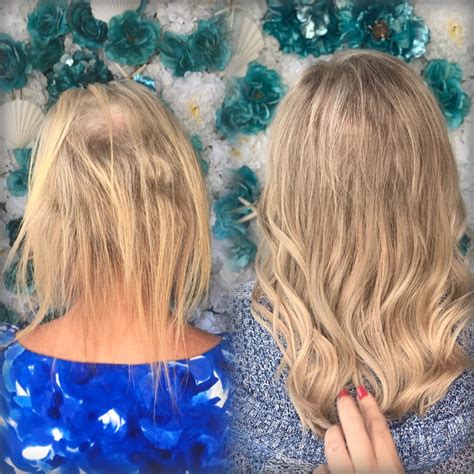Thinning hair is a common concern that affects millions of people worldwide. According to the American Academy of Dermatology, approximately 50% of women and 70% of men will experience hair loss at some point in their lives. While there are numerous causes of thinning hair, including genetics, hormonal imbalances, and medical conditions, it can significantly impact one’s self-esteem and quality of life.

Hair extensions offer a convenient and effective solution for adding volume and length to thinning hair, allowing individuals to regain their confidence and achieve their desired look. With various types of hair extensions available, it is crucial to understand the different options to make an informed decision.
1. Clip-In Hair Extensions
-
Pros:
- Easy to apply and remove
- Versatile, allowing for different hairstyles
- Affordable compared to other methods
-
Cons:
- Can be visible when not applied correctly
- May not be suitable for all hair types, especially very fine hair
2. Tape-In Hair Extensions
-
Pros:
- Long-lasting, with a lifespan of up to 8 weeks
- Flat and comfortable to wear
- Suitable for most hair types
-
Cons:
- Requires professional installation and removal
- Can be more expensive than clip-in extensions
3. Fusion Hair Extensions
-
Pros:
- Most durable option, lasting up to 6 months
- Creates the most natural-looking result
- Can be customized to blend seamlessly with natural hair
-
Cons:
- Requires specialized equipment and training to install
- Can be more damaging to natural hair than other methods
Choosing the Right Hair Extensions for Your Needs
The best hair extensions for you will depend on several factors, including your hair type, desired length and volume, budget, and lifestyle. Here’s a step-by-step approach to help you make the right choice:
- Determine Your Hair Type: Identify the texture, thickness, and health of your natural hair.
- Consider Your Desired Result: Decide on the length and volume you want to achieve.
- Research the Different Types of Extensions: Explore the pros and cons of each extension method.
- Consult a Hair Professional: Seek guidance from a licensed hair stylist who can assess your hair and recommend the most suitable extensions.
- Consider Your Budget and Lifestyle: Factor in the cost, maintenance, and longevity of each type of extension.
Hair Extension Maintenance & Care
Once you have chosen the right hair extensions, proper care and maintenance are essential to ensure their longevity and your hair’s health:
- Wash your hair regularly: Use sulfate-free shampoos and conditioners designed for hair extensions.
- Avoid heat styling: Use heat protectants and limit the use of hot tools on your extensions.
- Brush your hair gently: Use a wide-tooth comb or a brush specifically designed for hair extensions.
- Avoid over-brushing: Excessive brushing can cause breakage and damage.
- Store your extensions properly: When not in use, store your extensions in a cool, dry place to prevent tangling and damage.
Conclusion
Hair extensions are an effective solution for addressing the challenges of thinning hair. By understanding the different types of hair extensions and their pros and cons, you can make an informed decision based on your individual needs and preferences. With proper care and maintenance, hair extensions can help you achieve a thicker, fuller head of hair, boosting your confidence and enhancing your overall appearance.
